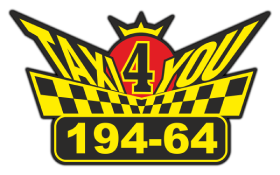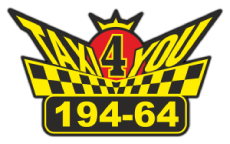DEAR CUSTOMER! PLEASE, READ IT.
Basic information about Taxi Services
1. The taximeter is a basic and mandatory device in every taxi. Its task is to charge fares according to fixed road or temporary tariffs. The taximeter operates on the following values:
1) Initial charge, the so-called “Taxi Start” − automatic fee charged at the start of each trip.
2) Charge per kilometer − a fee for each kilometer according to the current tariff.
3) Standstill fee − each stop and waiting time of the vehicle.
2. The tariffs apply depending on the duration or route of the trip. There are 4 tariffs:
1) Tariff 1 − weekdays 6:00-22:00.
2) Tariff 2 − weekdays, 22:00-6:00 (at night) and on public holidays and Sundays.
3) Tariff 3 − weekdays, 6:00-22:00, for trips outside the city limits of Szczecin, which must also end or start outside of Szczecin. Switching to Tariff 3 occurs when you pass the road sign designating the city limits.
4) Tariff 4 − weekdays, 22:00-6:00 (at night), and on public holidays and Sundays, for trips outside the city limits of Szczecin, which must also end or start outside of Szczecin. Switching to Tariff 3 occurs when you pass the road sign designating the city limits.
If a trip starts and ends in the city of Szczecin, the driver has no right switch to Tariff 3 or 4, even if he crosses the city limits. These tariffs are valid only if the starting or end point of the trip is outside the city of Szczecin.
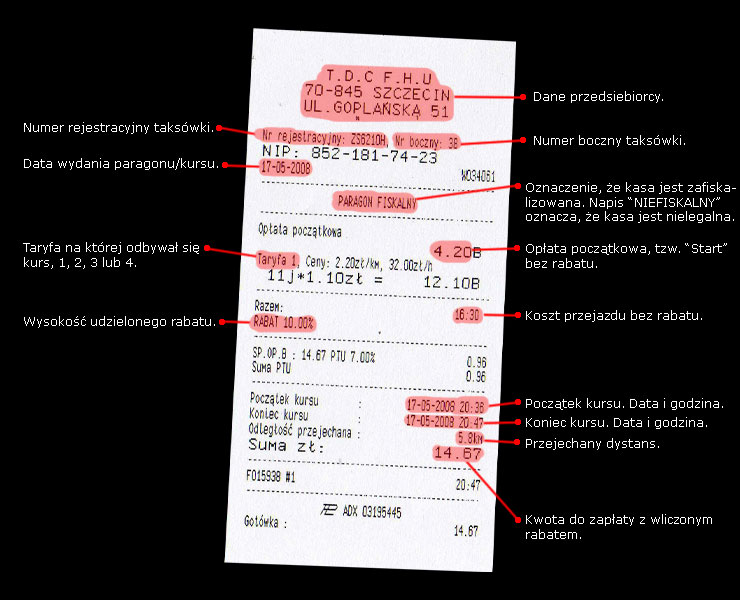
If a trip starts and ends in the city of Szczecin, the driver has no right switch to Tariff 3 or 4, even if he crosses the city limits. These tariffs are valid only if the starting or end point of the trip is outside the city of Szczecin.
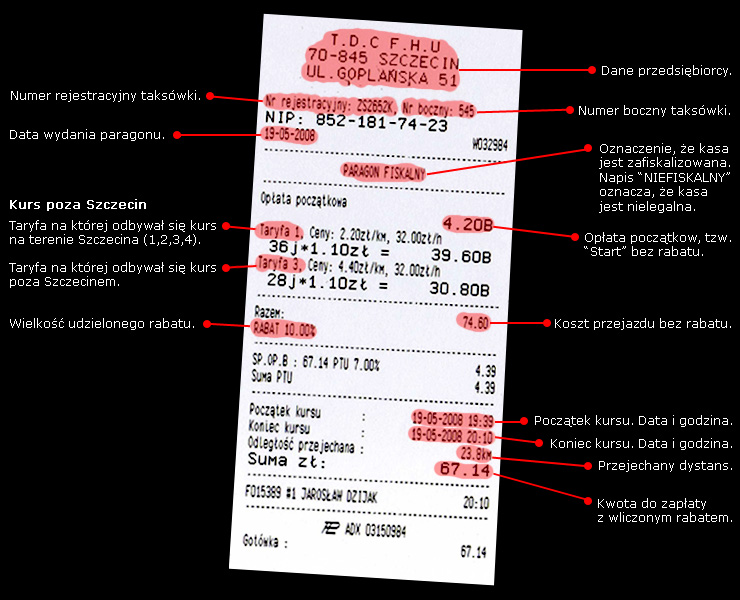
3. The standstill fee is charged automatically at each stop of the taxi: at pedestrian crossings, traffic lights, intersections, stop at a place chosen by the customer. Detailed pricing is included in the “OFFER”.
4. A receipt is proof of carriage and a source of information on the trip: the applicable tariff, any discounts and their value, driver's details, etc. (model receipt in the pictures below).
The taxi driver is obliged to issue a bill for each trip.
At request, the customer may receive a receipt (printout) from the cash register or a bill (invoice) − never both at once. The passenger has the right to refuse to pay for the trip if the driver has not delivered a receipt or bill.
The taxi driver is obliged to turn on the taximeter during the trip.
Otherwise the driver commits a fiscal offence. Often, such a trip is more expensive than those made legally.
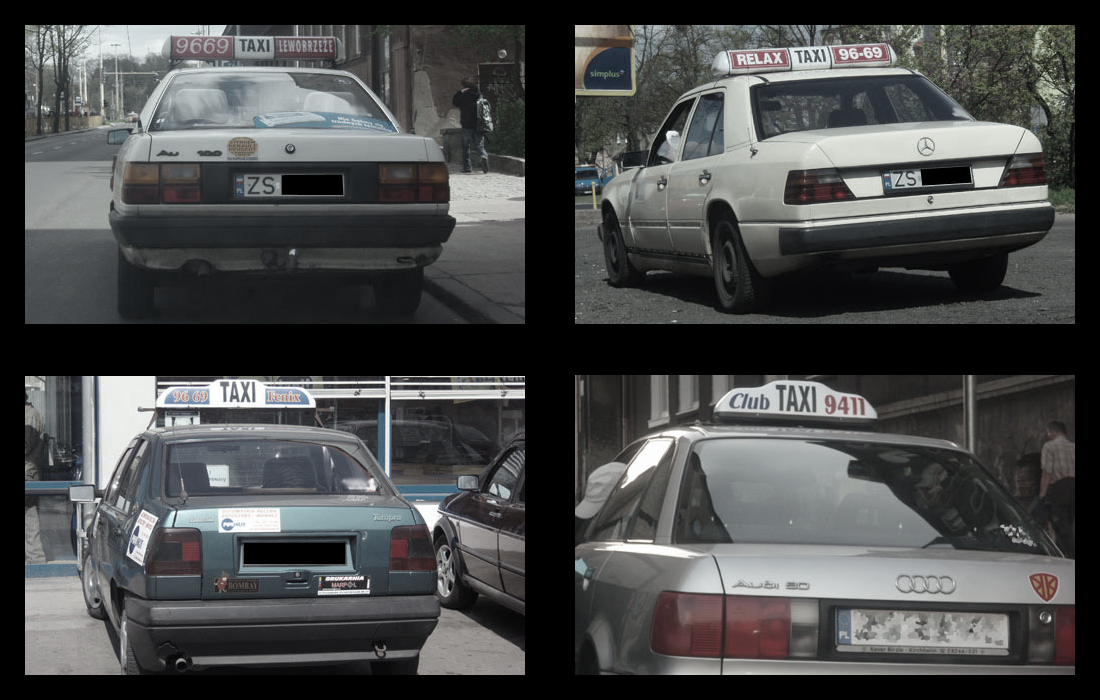
Not every taxi belongs to the corporation. A vehicle is marked like any other taxi, but the phone numbers and names of corporations do not exist. This is to suggest the use of standards and principles applicable at a typical corporation: discounts and special offers, reporting complaints, the standard service, guarantee the safe trip. We strongly discourage you from using such vehicles.
This practice is particularly evident at train stations. The main reason is the presence of a large number of potential customers who are from out of town. It is easier to deceive them with fake vehicle labelling.
On the left there are examples of such vehicles.
FREQUENTLY ASKED QUESTIONS (FAQs)
“Is the taxi driver entitled to demand payment for a trip not completed at his fault?”
-No. He is obliged to call another taxi for the customer (if he/she so wishes). An incomplete service is not subject to a fee.
“Is the taxi driver entitled to demand payment for damage caused by a passenger?”
-Yes. He may request to cover financial costs, for example replacement of damaged parts or cleaning the inside of the vehicle.
“Can the taxi driver refuse to take a passenger?”
-Yes. He has the right to refuse entry to the vehicle when he considers that the passenger, for example is aggressive, is scruffy or may pose a threat while driving.
“Is the taxi driver entitled to take a pledge in the form of documents on payment for the trip?”
-No. It is an offence punishable by Polish law.
“Each trip is different − why one day on the same route I paid PLN 12, and on the next PLN 14?”
-There may be two reasons: the driver often stops on the route (e.g. at intersections or pedestrian crossings) for which a higher fee was charged by the taximeter or the taximeter is not working properly. The latter case must be reported to the company and/or the taxi driver.
“Does the taxi have to be equipped with a child seat?”
-No. The provisions of the Traffic Code do not require the taxi driver to have a child seat. Here please ask for such equipment when ordering the vehicle.



